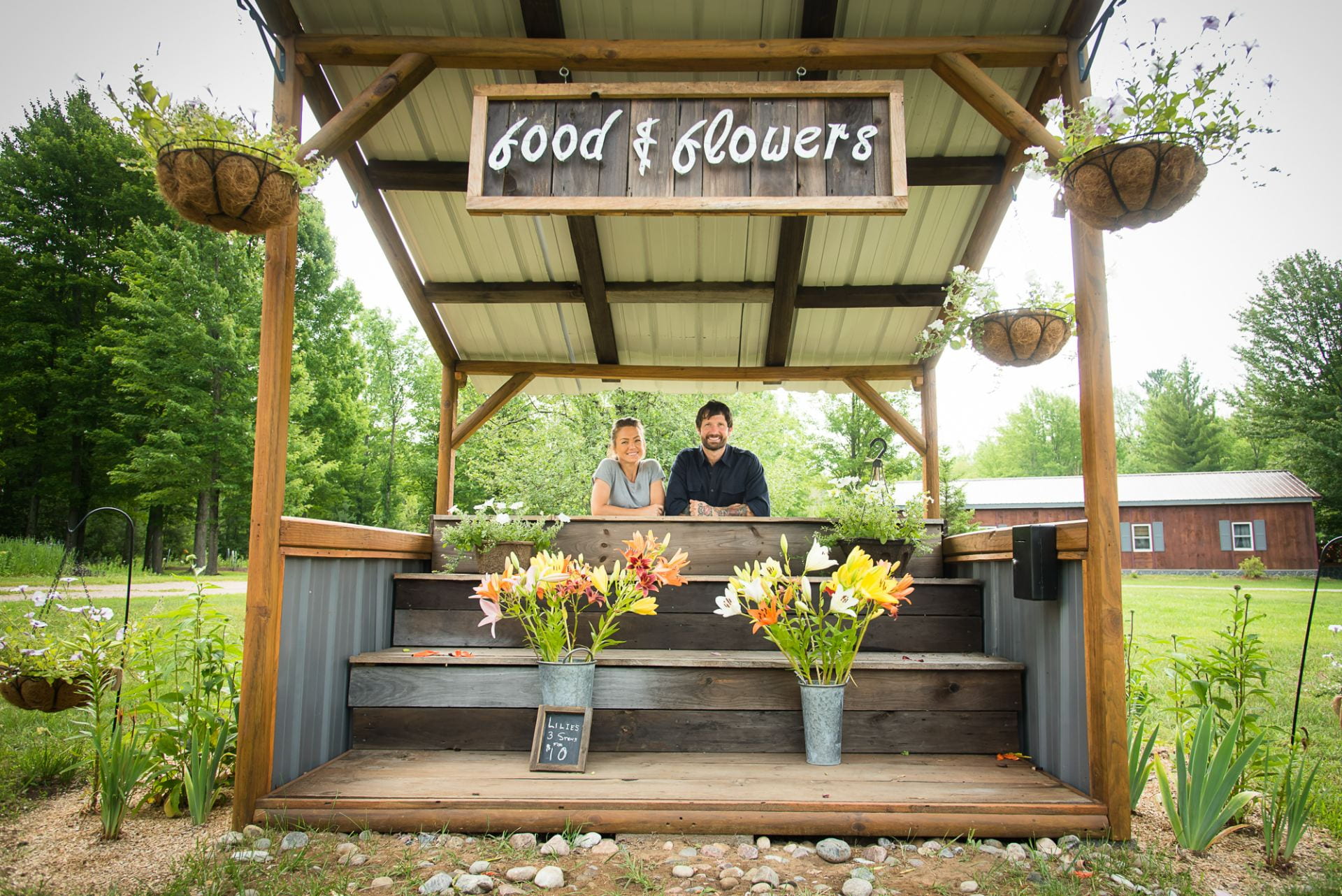The CCE Local foods team recently visited Our Little Grewve, a new farm in Hermon. It was a pleasure to learn more about their operation and offer a free professional photo shoot as part of our Farm-to-Table Initiative. Catch a glimpse of the farm through the camera lens.
 When visiting Our Little Grewve you might think the farm has been established for years. In reality, owners Elizabeth Seeley and John Anson are just in their second season of producing flowers and produce.
When visiting Our Little Grewve you might think the farm has been established for years. In reality, owners Elizabeth Seeley and John Anson are just in their second season of producing flowers and produce.

Their self-serve farmstand at 2202 county route 21 in Hermon greets you when arriving and is stocked with single stems, bouquets of flowers and fresh vegetables.

Garden beds with mulched pathways dot the property with flowers in full bloom or ones waiting for their turn to pop There is also a greenhouse that they added this past winter, which has helped with starting plants early and having a nice warm place to get their seedlings established. Read more Our Little Grewve – A Regenerative flower farm in Hermon, NY

